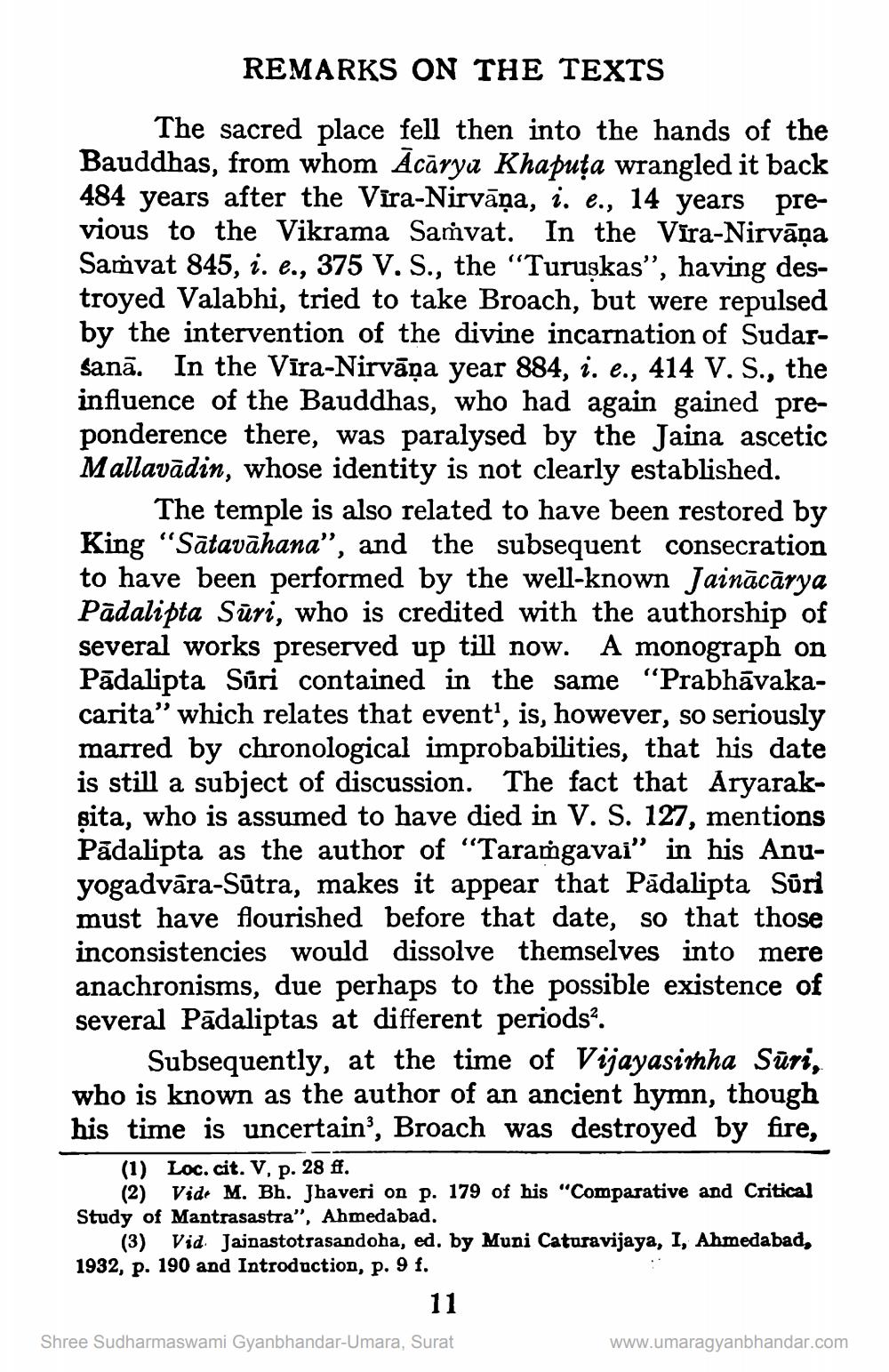________________
REMARKS ON THE TEXTS The sacred place fell then into the hands of the Bauddhas, from whom Ācārya Khapuța wrangled it back 484 years after the Vira-Nirvāṇa, i. e., 14 years previous to the Vikrama Samvat. In the Vira-Nirvāņa Samvat 845, 1. e., 375 V. S., the “Turuskas”, having destroyed Valabhi, tried to take Broach, but were repulsed by the intervention of the divine incarnation of Sudarsanā. In the Vira-Nirvāṇa year 884, i. e., 414 V. S., the influence of the Bauddhas, who had again gained preponderence there, was paralysed by the Jaina ascetic Mallavādin, whose identity is not clearly established.
The temple is also related to have been restored by King "Sātavāhana”, and the subsequent consecration to have been performed by the well-known Jainācārya Padalipta Sūri, who is credited with the authorship of several works preserved up till now. A monograph on Pādalipta Sari contained in the same "Prabhāvakacarita” which relates that event', is, however, so seriously marred by chronological improbabilities, that his date is still a subject of discussion. The fact that Aryaraksita, who is assumed to have died in V. S. 127, mentions Pādalipta as the author of “Taramgavai" in his Anuyogadvāra-Sūtra, makes it appear that Padalipta Sūri must have flourished before that date, so that those inconsistencies would dissolve themselves into mere anachronisms, due perhaps to the possible existence of several Pādaliptas at different periods?.
Subsequently, at the time of Vijayasimha Sūri, who is known as the author of an ancient hymn, though his time is uncertains, Broach was destroyed by fire,
(1) Loc. cit. V, p. 28 ff.
(2) Vide M. Bh. Jhaveri on p. 179 of his "Comparative and Critical Study of Mantrasastra", Ahmedabad.
(3) Vid. Jajnastotrasandoha, ed. by Muni Caturavijaya, I, Ahmedabad, 1932, p. 190 and Introduction, p. 9 f.
11
Shree Sudharmaswami Gyanbhandar-Umara, Surat
www.umaragyanbhandar.com




